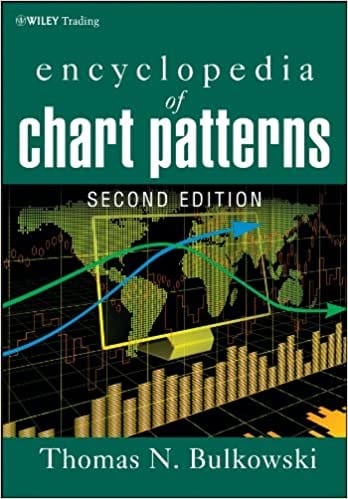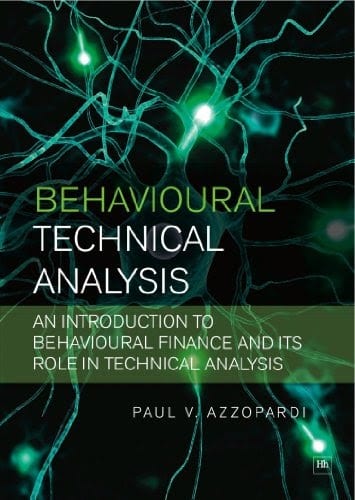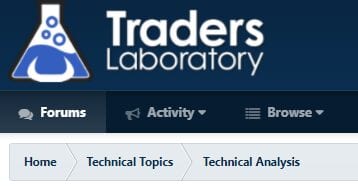A technical analysis course combines mathematical rigor, behavioral economics, and the excitement of playing the stock market. Learning technical analysis could be your ticket to independent wealth, or it could give you the requisite knowledge to nail the tough questions during your next financial analyst job interview. Or it could do both.
In this guide to technical analysis training, we’ll break down the fundamentals of technical analysis, explore how professional technical analysts use it, and go over trading courses and other resources that can put the tools of technical analysis at your disposal.
What Is Technical Analysis?
Technical analysis is one of two major schools of thought regarding how the price and/or value of tradable securities changes over time. Unlike fundamental analysis, which aims to assess a security’s intrinsic value as distinct from its market price, technical analysis begins with the premise that the price of a security is an accurate reflection of its market value.
From this premise, technical analysts argue that the only thing left to analyze is price movement, which they believe responds to the forces of supply and demand in predictable ways. By compiling, studying, and analyzing patterns in historical price information, technical analysts can forecast whether and how long certain trends are likely to continue.
Proponents of technical analysis suggest that it works best in highly liquid contexts, such as forex trading, the stock market, and the commodities market. This is because, as the theory goes, a high volume of buyers and sellers and a high frequency of trading ensure that the laws of supply and demand will then be sufficient to pin down value.
Two of the most important concepts in technical analysis are support and resistance. Whereas the support level is the price below which a security is unlikely to fall, the resistance level is the price above which a security is unlikely to rise. Together they establish the upper and lower limits on the price of a security within a given timeframe.
Technical analysts use support and resistance calculations to decide when they should go long and when they should sell short, which is one of the many ways they can turn a profit. Let’s take a closer look at what technical analysts do and how they do it.
What Is Technical Analysis Used For?
Everyone who uses technical analysis is trying to maximize the return on investment, whether for themselves or for a client. Of the many professions that employ technical analysis, below are the four most common.
- Day Trading. This is technical analysis in the shortest of short terms. Day traders keep their eyes trained on price charts throughout each day, using their forecasting prowess to buy low and sell high between the opening and closing bells.
- Swing Trading. Monitoring price changes over a longer timeframe than day traders, swing traders develop trading strategies based on trends in the price data that seem likely to continue for weeks at a time.
- Portfolio Management. Most portfolio managers use a combination of technical analysis and fundamental analysis to develop investment strategies that help clients meet their retirement goals. A portfolio actively-managed with technical analysis may see a higher rate of return than one passively-managed.
- Risk Management. Companies hire risk managers to assess the likelihood that their investment and growth plans will succeed. If you study to become a risk manager, you might be the one tasked with writing up a technical analysis of their business plan or performing a comparative analysis of two hypothetical alternatives.
Types of Technical Analysis: An Overview of Common Tools
When developing a trading strategy, each technical analyst chooses from literally hundreds of tools to mix and match. The three broad categories into which these tools fall are trend lines, chart patterns, and mathematical indicators.
Trend Lines
Stare at a chart for long enough, and your eyes will begin to organize rapid fluctuations of price into a series of short-term trends and long-term trends. Because market volatility masks the existence of trends, technical analysts draw trend lines that can show which way the market is tilting over a given timeframe.
The 50-day moving average, for example, is a trend line that depicts each moment on the price chart of a given security as the average price over the previous 50 days. The smoothed-out line gives the technical analyst a more accurate picture of the upward or downward trajectory that the security seems to be following in the present moment.
Chart Patterns
Not to be confused with upward and downward trends, chart patterns are specific shapes that have shown up so many times in historical charts that, when they recur in the present, technical analysis can reliably predict what the market will do next. Common chart patterns include head and shoulders, cup and handle, and flags and pennants.
Mathematical Indicators
Along with visual tools for analyzing price data, technical analysts employ mathematical formulas to measure changes in price and volume, calculate support and resistance, and evaluate the strength of a bull or bear market. The stochastic oscillator, Fibonacci retracement, and the relative strength index (RSI) are all examples of indicators.
Learning Technical Analysis

Because no two price charts are the same, proper technical analysis training is never complete. Even the most seasoned technical analysts must constantly refine their trading strategies, learning and relearning how best to apply the litany of techniques in their analytical toolboxes to particular markets at specific moments in time.
Technical analysis is not a fool-proof collection of tips and tricks, but rather a skill that you must work to maintain. If you’re hoping to find a one-size-fits-all trading strategy at the end of your training, you will be disappointed. But with patience and experience, you can develop a skill for interpreting charts that will soon start to feel like a sixth sense.
How Long Does It Take to Learn Technical Analysis?
If all you want is an introduction to Dow Theory, price charts, and a broad overview of the indicators and patterns that technical analysts use, you can acquire this knowledge in a weekend seminar.
But that level of training almost certainly won’t be enough to guarantee you success in playing the market. For that, you need the kind of deep understanding that only experience can provide.
The most distinguished technical analysts spend three years studying for and taking the three-part Chartered Market Technician (CMT) exam. While you don’t need to be a CMT to practice technical analysis professionally, you should probably study technical analysis for at least as long if you want to develop a competitive skill set.
How to Learn Technical Analysis: A Step-by-Step Guide
The goal of technical analysis training is to get to the point where you trust your knowledge enough that you’re confident making trades. Everything else is secondary. Before you start gambling your money on the stock market or on forex trading, build your knowledge and your confidence with these four steps.
- Brush up on your math. Quantitative literacy is an essential skill for performing technical analysis. To forecast future prices, technical analysts must be able to select the appropriate mathematical formulas and plug in the correct price information.
- Study the history and theory behind technical analysis. Without appreciating where technical analysis comes from and why it works, you will be applying the techniques blindly. By learning what technical analysts assume about the market, you can test the logic of their theories against your own intuitions.
- Practice interpreting different types of charts. To an untrained eye, a price chart looks like random squiggles. To a technical analyst, those same squiggles reveal meaningful trends and patterns. Once you can identify upward and downward trends for both the short-term and long-term, and determine which squiggles follow historical patterns, you will be ready to start extrapolating future prices.
- Develop trading strategies and test them out. Deciding what, when, and how much of something to buy or sell is a complex affair. Don’t expect to make money every time, but do play around with various combinations of analytical tools until you figure out which strategies optimize your desired level of risk. Through trial and error, you will eventually be able to develop a strategy for each unique trading situation.
The Best Technical Analysis Courses and Training

If you’ve spent any time on the Internet, you have probably seen your fair share of investment clickbait. Everywhere you turn, grifters are claiming to hold the secret formula for beating the market. Many of their tips and tricks borrow the language of technical analysis, but they give real technical analysts a bad name.
As you go about seeking education, bear in mind that technical analysis is not about hacking the market but rather getting to know the market’s underlying structure, logic, and psychology. Don’t trust anybody who tells you otherwise.
While get-rich-quick schemes are always a waste of time, a legitimate course on the history, theory, and practice of technical analysis is well worth whatever time you have to spare. None of the following courses contains the secret to making your first million, but all of them occupy a sphere of knowledge that will keep you far away from the charlatans.
Best In-Person Technical Analysis Courses
Because the accreditation process for technical analysts is designed to promote self-study, formal education in live classrooms is hard to come by. Occasionally you’ll find brokerage firms offering personal investment training, but unless you want to become a client, you won’t have easy access to their resources.
The fact of the matter is that most technical analysis courses have moved online. Even so, if you’re the kind of person who learns better in a classroom, there are a few options for you.
New York Institute of Finance
- Name: Trading – Fundamentals of Technical Analysis – New York City, NY
- Dates: May 24-25, 2021
- Prerequisites: None
- Cost: $1,351.20
Instituted by the New York Stock Exchange almost 100 years ago, the New York Institute of Finance offers in-person courses just a few blocks from the belly of Wall Street. In this two-day course, students will learn how to blend technical analysis and fundamental analysis into a framework for making smart investment decisions.

"Career Karma entered my life when I needed it most and quickly helped me match with a bootcamp. Two months after graduating, I found my dream job that aligned with my values and goals in life!"
Venus, Software Engineer at Rockbot
Once you know all the patterns and indicators and have some practice reading the charts, you’ll be able to start developing trading strategies with theoretical rigor. And if you’re itching for even more precision and objectivity, you can spend an extra $711.20 and add a third day of quantitative analysis training.
CFA Society
- Name: Technical Analysis – Washington, D.C.
- Time: 1 day, date TBA
- Prerequisites: None
- Cost: $125 with membership, $175 without membership
It used to be that Chartered Financial Analysts didn’t have to know much about the technical side of investment forecasting. But because of the renaissance that technical analysis has experienced in recent years, CFAs are doing all they can to stay ahead of the curve.
This all-day seminar will introduce attendees to the basics of technical analysis, including guiding assumptions, charting tools, and how its usage varies depending on what security market you’re considering.
Best Online Technical Analysis Courses
As long as the COVID-19 pandemic is still raging, it may be best to stick with online courses. And you’re in luck. Either of the two options below are affordable ways to expose yourself to expert knowledge and engaging content from the safety of your home office.
Investopedia Academy
- Name: Technical Analysis
- Time: Self-paced and on-demand
- Prerequisites: None
- Cost: $199
Investopedia Academy is blowing up. Not only did they get the renowned JC Parets to teach this course, but your $199 also scores you a 30-day free trial to All Star Charts, Parets’ own award-winning technical analysis publication.
The course’s seven interactive modules and corresponding exercises guide students through the different types of charts, how to read and interpret them, and how to calculate support and resistance levels using Fibonacci sequences. Regardless of which security you’re interested in trading, Parets is here to help.
Udemy
- Name: Technical Analysis MasterClass: Trading by Technical Analysis
- Time: 7.5 hours
- Prerequisites: None
- Cost: $129.99
Jyoti Bansal is a prolific Udemy instructor with two technical analysis certifications to her name, and her Masterclass is suited for investors of all experience levels. Nowhere online will you find another course that covers the field of technical analysis as broadly as this one.
Come for the video lectures on every topic under the sun, and stay for the four assignments tailored to give you ample practice sorting out and applying all the charting concepts. Before you know it, you’ll be developing trading strategies of your very own.
Best Free Technical Analysis Training
If you have the patience and discipline to sift through tutorials at your own pace, without a live instructor to build bridges between modules, you can learn a lot for no money at all.
But you have to choose wisely. When it comes time to test your learning out in the markets, your actual money will be on the line. If you decide to take advantage of these free courses, just make sure you understand all the material before you start trading.
Traders’ Academy
- Name: Introduction to Technical Analysis and Intermediate Technical Analysis
- Time: Self-paced and on-demand
- Prerequisites: None
- Cost: FREE
Depending on your comfort with technical analysis, you can take the Traders’ Academy intro course, which consists of six video lessons, or move straight to the eight-lesson intermediate level. Each lesson in both levels comes with study notes and learning outcomes, as well as a quiz that you can take to test your understanding.
Whereas the first course is more of a general overview of charts and market volatility, the more advanced course gets into the weeds with lessons on moving averages, oscillators, Fibonacci retracements, and a detailed comparison of technical analysis and fundamental analysis.
The Chart Guys
- Name: A Beginner’s Guide to Trading Using Technical Analysis
- Time: Self-paced and on-demand
- Prerequisites: None
- Cost: FREE with login
You have to sign up for a Chart Guys account to get access to the Beginner’s Guide, but there are no other strings attached. With seven modules and over forty lessons of video content, it will answer all of your questions about why technical analysis works, which trends and strategies you should trust, and what role psychology plays.
Stock Charts
- Name: Chart School
- Time: Self-paced and on-demand
- Prerequisites: None
- Cost: FREE
Though less curated than the Traders’ Academy and Chart Guys courses, Chart School by Stock Charts is still a great public service for anyone hoping to reduce the element of randomness in their investment choices.
Make your way through the eight-part article series on the fundamentals of technical analysis, and then scroll down to browse Chart School’s proprietary charting aids, a collection of resources for further learning, and six categories of instructional videos.
Best Technical Analysis Books
Wait a minute. With so many educational resources available for free online, why even bother making book recommendations?
Before you skip this section, hear us out. While books are certainly an outdated technology for learning some things, they remain the ideal medium for conveying everything there is to know about technical analysis. Every printed page is a potential canvas for displaying charts and text in an informative symmetry. It’s the dream of technical analysts and publishers alike.
And besides, if you want to earn your CMT accreditation, the largest professional prize in the field of technical analysis, you must buy and study three thick books of curriculum material. It doesn’t get more old-school than that.
The point is that books make compact work of the secrets behind market trends. Just the two selections below will have you making smarter trading decisions in no time.
Encyclopedia of Chart Patterns: Second Edition, By Thomas N. Bulkowski

Bulkowski is an analyst’s analyst, a true savant when it comes to identifying patterns, classifying them, and explaining them to a general audience. This encyclopedia crystallizes Bulkowski’s decades of knowledge and experience into dozens of chart patterns, each of which has its own entry and over ten pages of content devoted to it.
By giving a name to all these patterns, Bulkowski equips readers to discern reliable signals amid all the market noise. He also breaks down how markets tend to respond to different types of real-world events. There’s no such thing as perfect information, but this book comes close, and you will be a more confident trader having it on your desk.
Behavioural Technical Analysis: An Introduction to Behavioural Finance and Its Role in Technical Analysis, By Paul V. Azzopardi

According to skeptics of technical analysis, the signals and indicators in which day traders place their faith are nothing more an illusion, and trying to predict how markets will behave in the future is a fool’s errand. Not so, says Paul Azzopardi, who uses the emerging discipline of behavioral finance to take the mystery out of what technical analysts do.
If human nature is unchanging, Azzopardi reasons, then the patterns in historical market data tell a consistent story about the psychological biases that drive fluctuations in buying and selling. Behavioral Technical Analysis allows readers to bolster their faith in markets with the scientific observation that human beings behave in predictable ways.
Best Online Technical Analysis Resources
Technical analysts are more inclined to help the next generation than you would necessarily expect of a group of professionals competing with each other to turn a profit. Many of them make themselves and their knowledge accessible to the public by maintaining a healthy presence online and in digital media.
To enter the vibrant community of technical analysts, be sure to check out these resources.
Traders Laboratory: Technical Analysis Forum

This forum is exactly what it sounds like, a meeting place for professional traders and trading hobbyists to refine their approaches to the craft.
Pinned at the top of the forum are three threads. One is a formal introduction to the topic, where posters discuss the basics of technical analysis. The second is a highly technical discussion about the relationship between price and volume. And the third is a living record of all the analytical tricks with which posters have found success.
Technical Analysis Radio: All Star Interviews Podcast
JC Parets doesn’t only teach trading courses for Investopedia Academy. He also hosts a successful interview podcast, which has been running strong for four years and over 100 episodes. Subscribe to the show wherever you get your podcasts or browse the archive until you find something that strikes your fancy.
Recent episodes include a deep dive on the Dow theory, a conversation with one of the most prominent hedge fund managers in the United States, and a panel debate about market breadth. Episode length ranges from thirty minutes to an hour, and all are worth listening to.
Should You Study Technical Analysis?
As the wealth of free courses and resources shows, there are very few barriers to learning technical analysis. The learning opportunities are everywhere, you can practice it without a degree, and the best markets on which to apply its techniques are there for the taking.
But you won’t get very far as a hobbyist. If you think that a single weekend course will transform you into an instant expert, you may end up throwing your money away before you know what hit you.
If, on the other hand, you’re serious about building personal wealth or becoming a financial advisor, you could be a few short years away from a lifetime of profitable investments.
About us: Career Karma is a platform designed to help job seekers find, research, and connect with job training programs to advance their careers. Learn about the CK publication.



